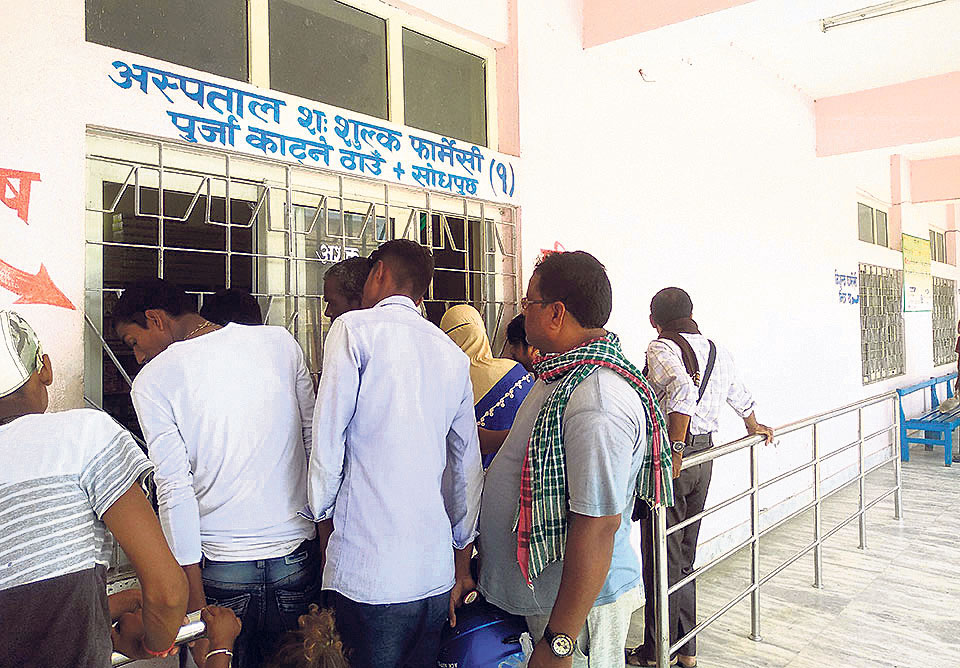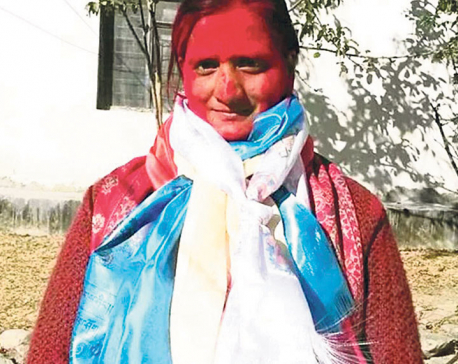
OR


Mukesh Adhikari
The author is Public Health Officer at Department of Health Service, Teku, Kathmandunews@myrepublica.com
Instead of airlifting childbearing women from remote districts, the government should think of strengthening local health system which can save a myriad of pregnant and postpartum women
Nowadays, the news of airlifting childbearing women from remote areas by the government is common. In this fiscal year only, the government airlifted four childbearing women from Bajhang, a remote district of Sudurpaschim Province. Similar incidents were observed in Dolpa, Jajarkot, Bhojpur and many other remote districts. While on the one hand, it shows the responsiveness of the government to save the lives of needy people, on the other, it depicts the failure of the local health system. If we don’t think judiciously in this matter, this will further jeopardize the local health system. Only a few lives will be saved, and in the long run, the needy people will be deprived of quality health services.
It is the duty of the government to ensure health and well-being of the citizens. Our constitution has a provision of the right to health where it is mentioned that no one shall be deprived of emergency health care services. Although at a cursory glance, it seems the praiseworthy approach of government to save the lives of mothers, there are a lot of questions attached to this strategy. Is it an efficient approach to save the lives of small number of women? What about the women who don’t come in contact with the health facilities during child birth and suffer life-threatening complications? Can’t we think of strengthening the local health system which can save a myriad of pregnant and postpartum women in a sustainable manner instead of spending so much for such a piecemeal approach?
Every pregnancy around the world is at risk as the complications are unpredictable. According to the World Health Organization, estimated 15 percent of pregnant women suffer from complications during pregnancies and deliveries and 5-10 percent of them need cesarean deliveries to avoid deaths or long-term morbidity. The early detection of the complications and their management through appropriate referral mechanisms is the key to saving lives. For this, a continuum of care approach from pre-pregnancy to post-partum period is needed and to achieve this, there is no other option than strengthening the local health system.
To manage such complications especially in remote areas, the government of Nepal has allocated five million rupees in each province as emergency referral funds under the safe motherhood and newborn care program. Further, there is a provision of airlifting women who have life-threatening conditions during pregnancy and delivery under the Rashtrapati Mahila Utthan Karyakram. The average per head cost of airlifting according to the Ministry of Social Development of Sudurpaschim Province is about 0.5 million rupees. Instead of spending such enormous costs in a single woman, it would be wise to invest in strengthening the local health system. Yes, in severe cases, there is no choice for airlifting but this approach should not be taken as a routine strategy to manage severe complications. Some might argue that saving a life is precious than saving costs. But saving thousands of lives through a sustainable approach is far better than saving one life.
Surprisingly, in some cases, even the representatives of political parties are actively involved in airlifting women to get popularity so that they can secure vote banks for the future. Although the process of airlifting should be a systematic and apolitical process, political influences were observed. Taking photographs during airlifting by the ministers and being popular in media in some cases do indicate their vested interests. It should be clear that the responsibility of the ministers is to formulate policy and guide the overall system toward prosperity rather than involving in airlifting single woman. These incidents somehow implicitly indicate that the women having greater access to resources benefit more, while the marginalized women who lack such access do not get the chance.
Way forward
Proper referral mechanism in the health system is essential to save lives at low costs especially in case of low resource settings like Nepal. Normally, health posts are the first institutional contact points for the women in the community. Normal deliveries can be safely conducted at the health posts. Each level above the health post is a referral point in a network. It starts from Primary Health Care Centers to Primary and Secondary level hospitals, and finally to Tertiary level hospitals. Some common complications can be handled easily at Primary Health Care Center and cesarean delivery can be performed at district level hospital. If the complications are life- threatening, then specialty care is needed. If health posts, primary health care centers and primary level hospitals are strengthened in a systematic manner, majority of the complications can be detected early and managed at the respective levels. This can reduce the unnecessary costs of the government and at the same time eliminate unnecessary burdens in the tertiary care centers.
Additionally, a significant number of women are dying as a result of home delivery. According to Nepal Demographic Health Survey (2016), nearly four out of ten women deliver their babies at home. Postpartum hemorrhage is the number one killer that can easily be prevented if the delivery is assisted by Skill Birth Attendants at the grass-roots level. We need to strengthen the local health system to increase accessibility to health care services. Each local level should be well equipped with the primary level hospital. Each ward level should have a provision of health post or basic health service units with skilled midwives who can detect and manage early complications.
Prevention, detection and timely management of complications through well-functioning referral mechanisms should get priority rather than the piecemeal approach of airlifting. Due to difficult geographical terrain in remote areas, we need airlifting service for highly complicated cases. However, it is not a permanent solution. A rather sustainable and efficient mechanism should be established to improve overall maternal health.
The author, Public Health Officer in the Ministry of Health and Population, is currently studying health policy at Yale University, US
Email: mukesh.adhikari@yale.edu
You May Like This

Earthquake tremors felt twice in Sudurpaschim
KATHMANDU, Oct 3: Earthquake tremors have been felt twice in Sudurpaschim Province. ... Read More...

Independent candidate Hamal leading mayoral race by 11,000 votes in Dhangadhi sub-metropolis
DHANGADHI, May 21: Independent candidate Gopal Hamal is leading the mayoral race in Dhangadhi sub-metropolis of Sudurpaschim Province by a... Read More...

Sudurpaschim assembly member held for 7 hours by Chand’s cadres
BAJHANG, March 9: Devaki Malla (Thapa), a member of the Sudurpaschim province assembly who was briefly held by the cadres... Read More...







Just In
- NRB to provide collateral-free loans to foreign employment seekers
- NEB to publish Grade 12 results next week
- Body handover begins; Relatives remain dissatisfied with insurance, compensation amount
- NC defers its plan to join Koshi govt
- NRB to review microfinance loan interest rate
- 134 dead in floods and landslides since onset of monsoon this year
- Mahakali Irrigation Project sees only 22 percent physical progress in 18 years
- Singapore now holds world's most powerful passport; Nepal stays at 98th











Leave A Comment